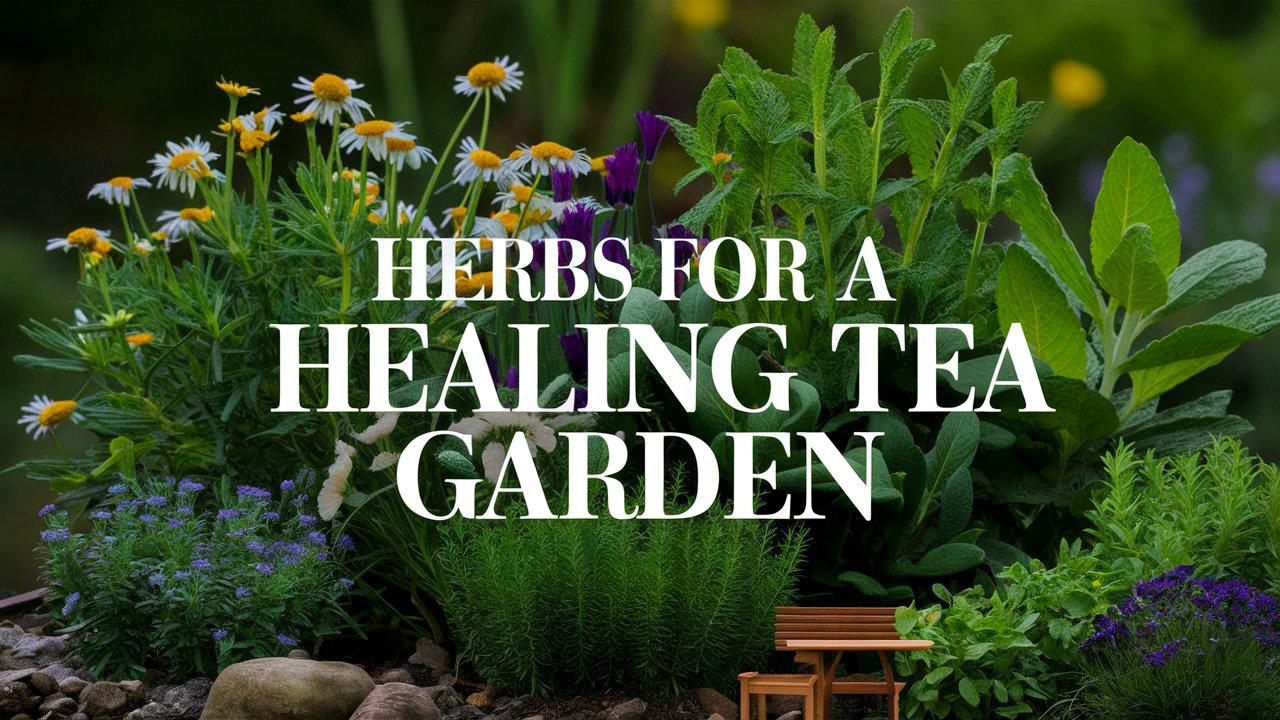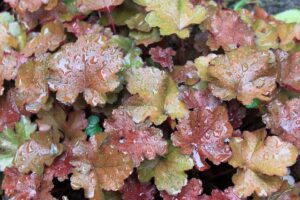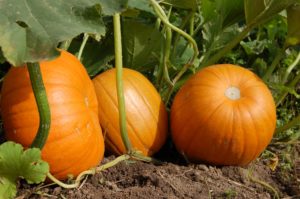Creating a healing tea garden is not only a rewarding pursuit for tea enthusiasts but also an excellent way to embrace the therapeutic properties of nature. This guide offers insights into various herbs that flourish in a tea garden, detailing their unique benefits, usage, and care.
Mint
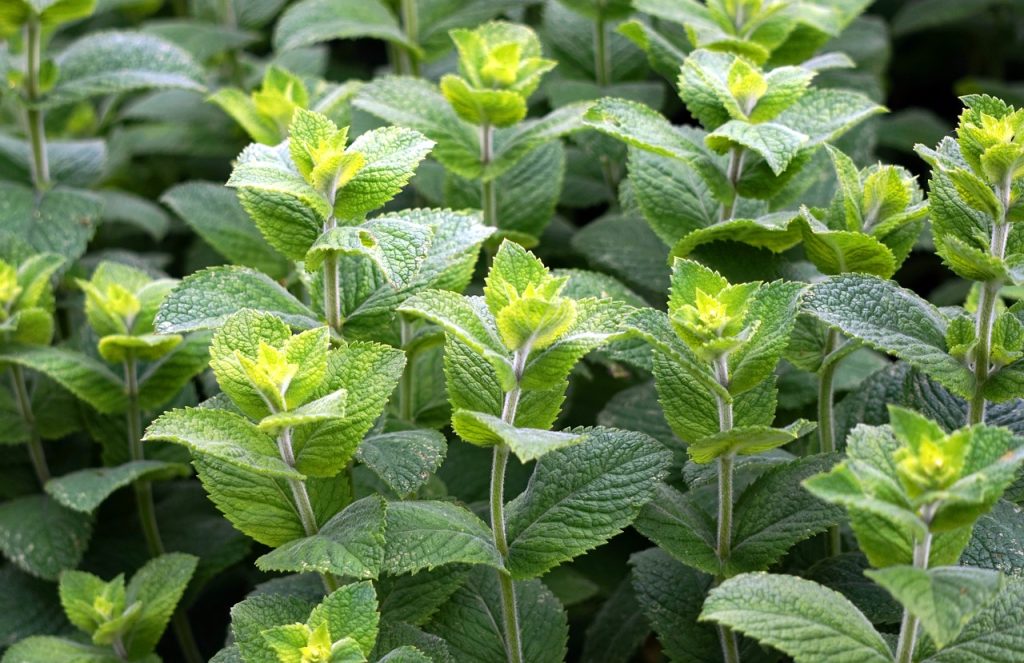
Mint is a refreshing herb known for its cool flavor and invigorating aroma. Varieties like spearmint and peppermint can be easily cultivated in a tea garden, bringing a lively presence to your herbal collection. Mint tea is widely cherished for its calming effects on the digestive system, helping to alleviate issues such as bloating, nausea, and indigestion. The aroma of mint also acts as a natural mood booster, enhancing mental clarity and creating a sense of well-being.
Mint is prolific and can grow abundantly, often requiring containment to prevent it from overtaking your garden. A simple guide for brewing mint tea includes steeping about 1 tablespoon of fresh mint leaves (or 1 teaspoon dried) in boiling water for 5 to 10 minutes, depending on your desired strength. The tea can be enjoyed hot, but it also makes a refreshing iced mint tea when served with ice cubes and a slice of lemon.
Lavender
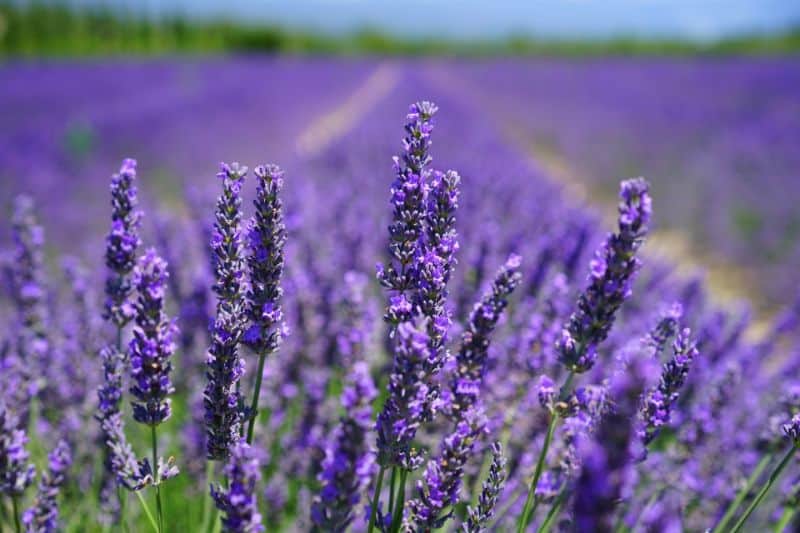
Lavender’s elegant flowers and enchanting scent make it a cherished addition to any tea garden. Known for its calming effects, lavender tea can promote relaxation and aid in sleep disorders, providing a gentle remedy for anxiety and stress. The tea has a mildly floral and slightly sweet taste, which can be enjoyed on its own or blended with chamomile or lemon balm for enhanced relaxation.
To prepare lavender tea, steep 1 to 2 teaspoons of dried lavender buds in simmering water for 5 to 10 minutes. Lavender pairs beautifully with honey, which can add a touch of sweetness and additional calming properties. Beyond tea, lavender can be used in baking or as an aromatic component in sachets, enhancing both culinary and household applications.
Chamomile
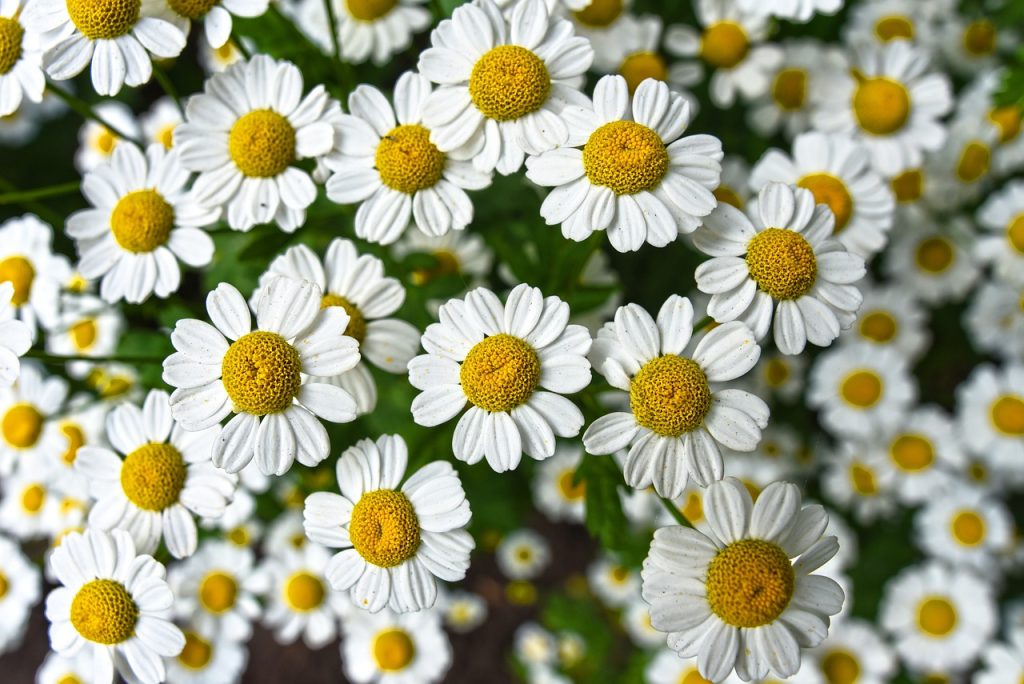
Chamomile is revered for its soothing properties and is one of the most popular herbal teas. This delicate flower promotes relaxation, helps with insomnia, and can alleviate digestive problems, such as bloating and gas. Drinking chamomile tea is often recommended before bed, thanks to its mild sedative effects that can help foster a peaceful night’s sleep.
To brew chamomile tea, use 1 to 2 tablespoons of fresh flowers or 1 tablespoon of dried chamomile. Infuse the flowers in boiling water for about 5 to 10 minutes to extract their flavor and benefits fully. Many enjoy enhancing chamomile tea with a drizzle of honey or a sprinkle of cinnamon for a touch of warmth and sweetness.
Bee Balm/Bergamot
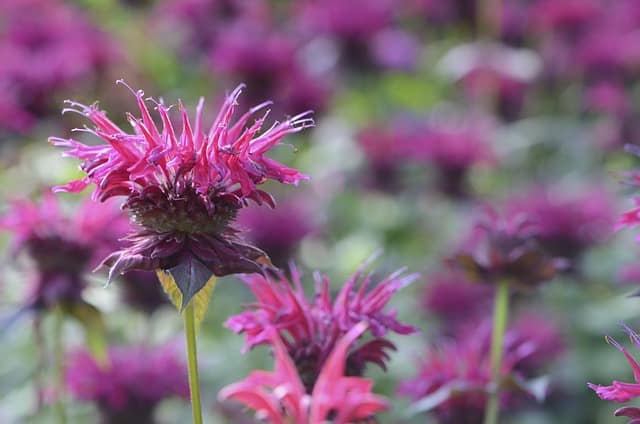
Bee balm, or bergamot, is both aesthetically pleasing and functional in the tea garden. It attracts honeybees, butterflies, and other beneficial insects, making it a lovely addition for environmental sustainability. The tea made from bee balm has a unique minty flavor, often compared to a blend of mint and oregano, with its aromatic profile delivering a refreshing drink.
Bee balm tea is known for its antiviral and antibacterial properties, which can boost the immune system. To brew, use 1 tablespoon of dried or fresh leaves steeped in hot water for 10 minutes. You can enjoy it straightforward or mix it with other herbs such as lemon balm or hibiscus for a flavorful blend.
Lemon Balm
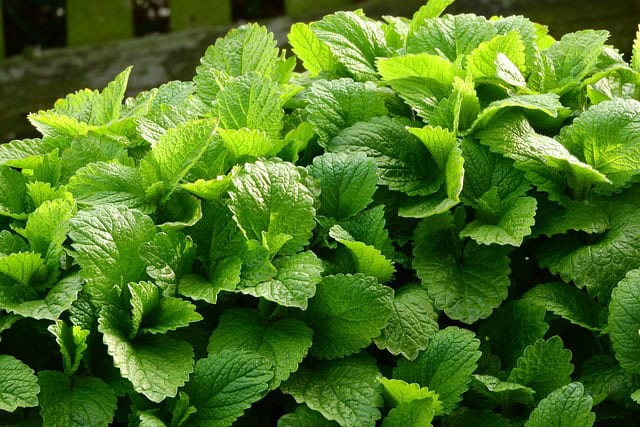
Lemon balm offers a bright and refreshing citrus aroma, which serves as an uplifting herbal tea. This member of the mint family is known for its calming effects and ability to reduce anxiety. Lemon balm tea is delightful when enjoyed on its own or combined with calming herbs like chamomile and lavender.
A simple recipe for lemon balm tea involves using 1 tablespoon of chopped fresh leaves or 1 teaspoon of dried leaves steeped in hot water for 5 to 10 minutes. The versatility of lemon balm extends beyond tea; it can be used to add zest to salads or as a garnish for cocktails, making it a valuable plant in both your tea garden and kitchen.
Lemon Verbena
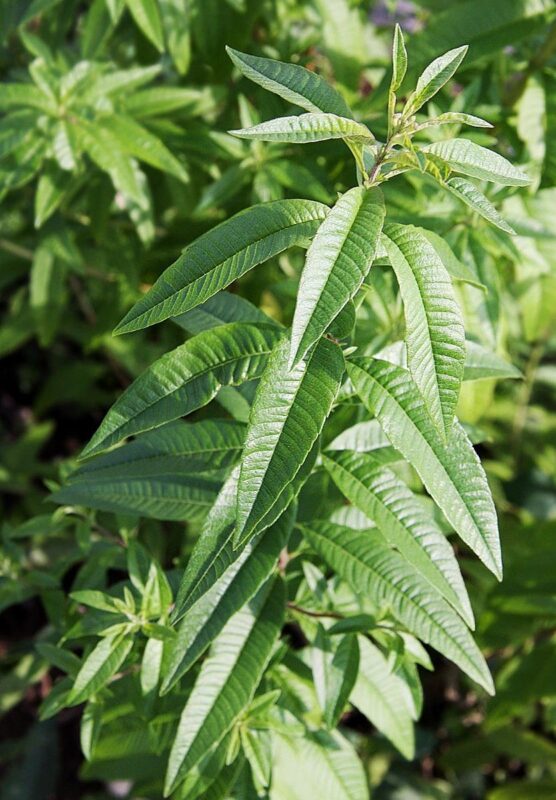
With its intensely fragrant leaves, lemon verbena creates a uniquely aromatic tea known for its uplifting qualities. The tea has a bright, lemony flavor and can aid in digestion and provide a refreshing lift to your day. The herb is also noted for its ability to relieve stress and promote relaxation.
To brew lemon verbena tea, steep 1 to 2 teaspoons of dried leaves in hot water for about 8 to 10 minutes. This tea is delightful on its own, or enhanced with a slice of fresh lemon or a bit of honey. Lemon verbena can also be infused in oils or used in desserts, showcasing its culinary versatility.
Roses
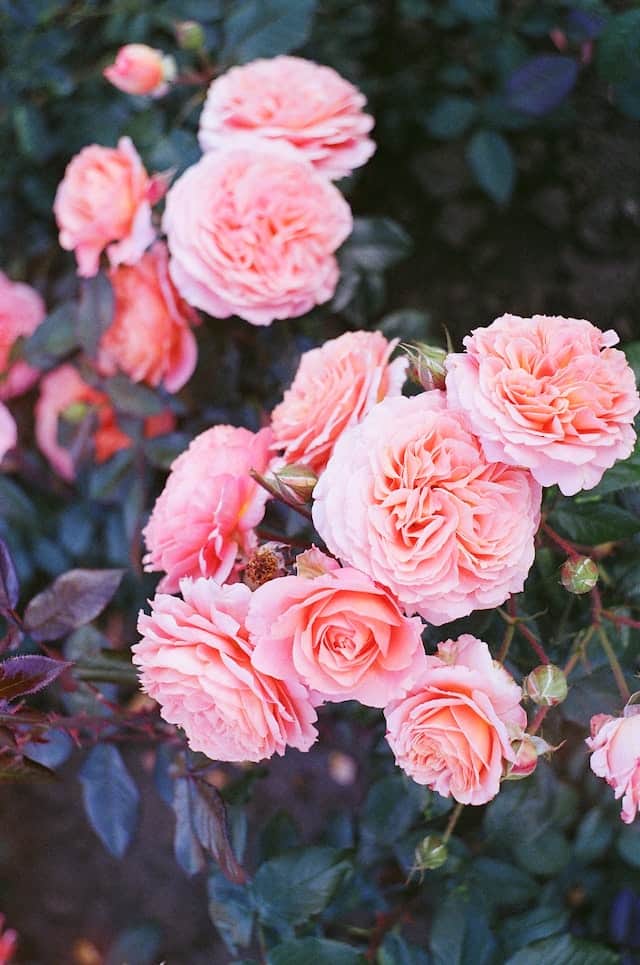
While roses are often admired for their aesthetic beauty, many varieties yield flavorful tea that possesses medicinal properties. Rose petal tea is rich in antioxidants, promoting skin health and emotional well-being by alleviating symptoms of stress and anxiety. With its subtle sweetness and floral flavor, rose tea serves as an elegant beverage choice, perfect for afternoon tea parties or relaxing evenings.
To prepare, use about 1 tablespoon of dried rose petals and steep them in boiling water for 5 to 10 minutes. For added flavor, consider blending the rose petals with other herbs like chamomile or lemon balm. Rose tea can also be complemented with honey for enhanced sweetness and health benefits, particularly for soothing sore throats.
Basil
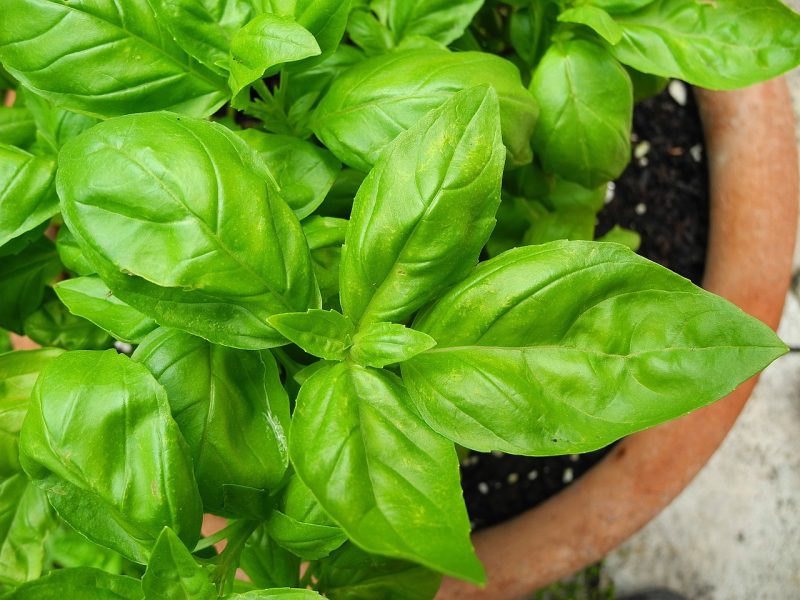
Basil, predominant in culinary circles, is an excellent herb for tea drinkers, offering a warm, slightly peppery flavor. It has numerous health benefits, including anti-inflammatory properties and potential stress-relieving effects, making basil tea a comforting drink.
To make basil tea, steep 1 tablespoon of fresh basil leaves or 1 teaspoon of dried leaves in hot water for roughly 5 to 7 minutes. Experiment with variations by combining basil with lemon or mint to create a refreshing, herbal concoction. Beyond tea, basil also provides significant culinary value, making it a multi-functional herb in both the tea garden and kitchen.
Thyme
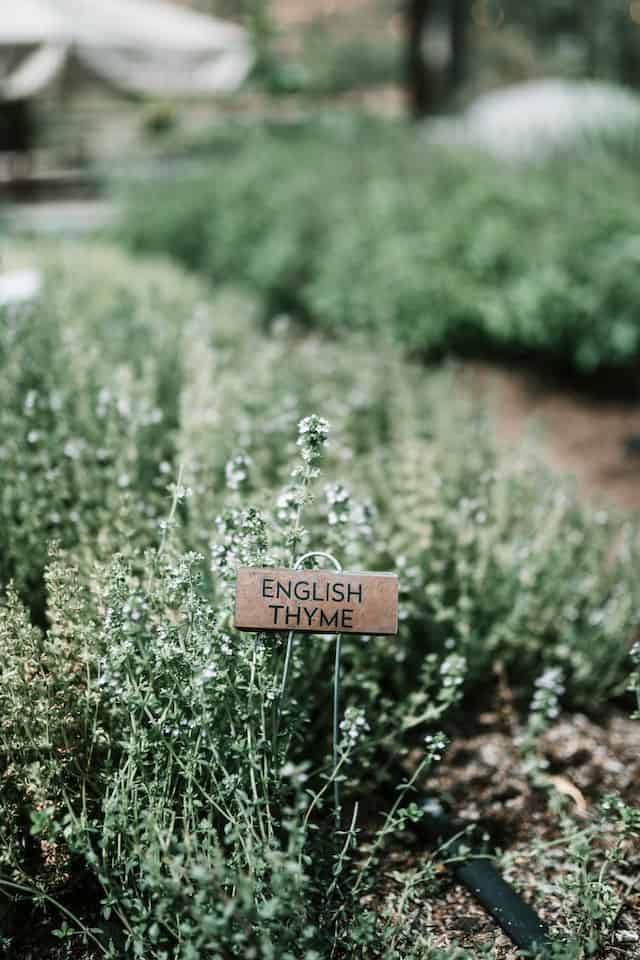
Thyme is a versatile herb that not only adds flavor in cooking but also holds numerous health benefits that translate well into a tea. It is recognized for its antimicrobial properties and is often used as a remedy for respiratory issues. Thyme tea can be beneficial for soothing coughs and aiding overall respiratory health.
For thyme tea, use approximately 1 tablespoon of fresh or dried thyme leaves steeped in boiling water for about 5 to 10 minutes. The tea has a strong, earthy flavor, which can be enhanced with honey or lemon. Thyme pairs particularly well with other herbs such as sage and oregano, allowing you to experiment with different flavor profiles in your tea blends.
Rosemary
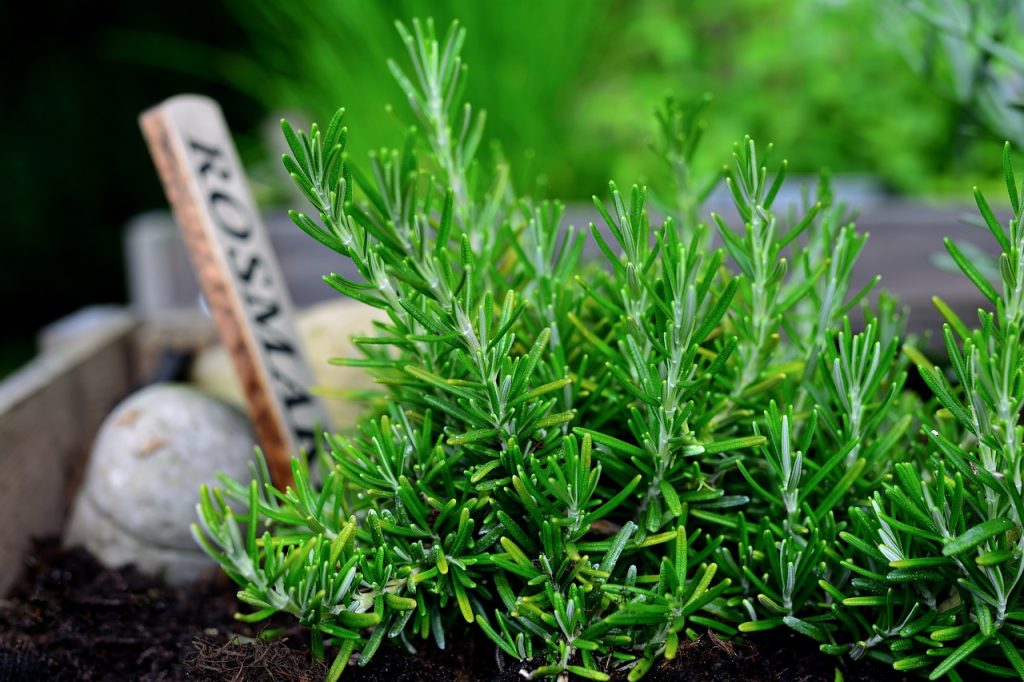
Rosemary is known for its aromatic leaves and is often used in culinary dishes, but it makes a surprisingly delightful tea as well. Rosemary tea is reputed for enhancing memory, boosting mood, and aiding digestion. The flavor is robust, with a slightly pine-like and earthy tone, adding a unique twist to your tea collection.
To brew rosemary tea, take 1 tablespoon of fresh or dried rosemary, steep it in hot water for about 5 to 10 minutes, and enjoy it either warm or chilled. Rosemary can also serve as an excellent base for herbal blends, complementing other flavors such as citrus or ginger nicely. The versatility of rosemary extends to your kitchen for seasoning meats, vegetables, and even in baked goods.
Horehound
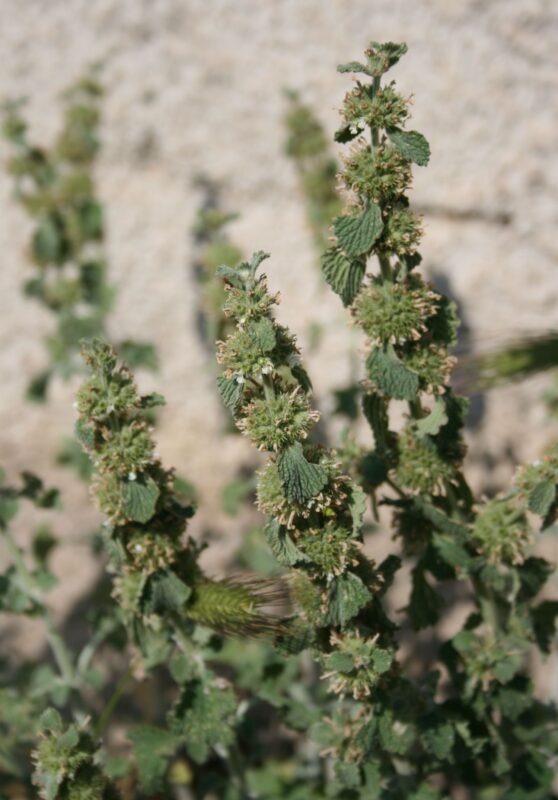
Horehound is an herb with a long history of medicinal use, primarily recognized for its efficacy in treating coughs and respiratory ailments. The tea made from horehound has a slightly bitter taste, which might take some getting used to—but its health benefits are worth it. Horehound tea can help soothe sore throats and clear congestion, making it a valuable addition to your herbal tea repertoire, especially during cold and flu season.
To prepare, steep 1 to 2 teaspoons of dried horehound in boiling water for about 10 minutes. Many find that adding honey or lemon can improve its flavor profile, making it a more palatable choice. Additionally, horehound can be used to create cough syrups, further expanding its uses in your home remedies.
Stevia
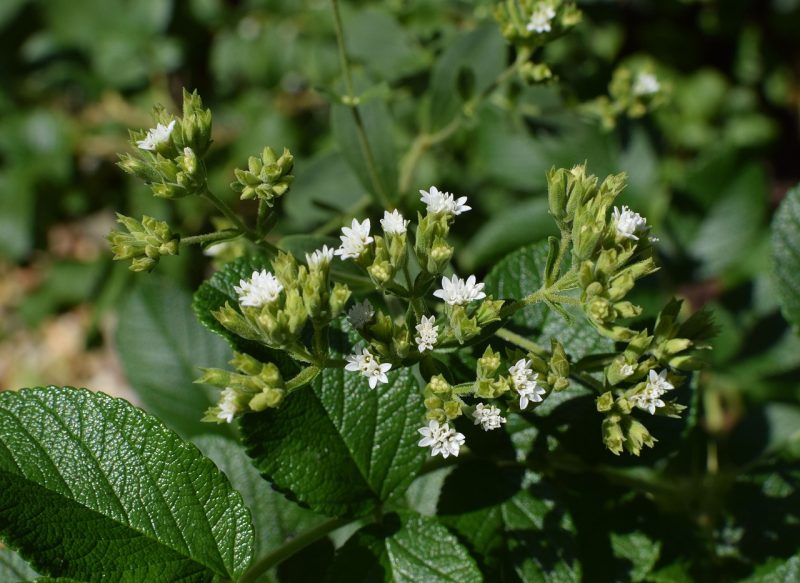
Stevia is an herbaceous plant known for its natural sweetness and is increasingly popular as a sugar substitute. Growing stevia in your tea garden allows you to sweeten your herbal concoctions healthily and naturally. The leaves can be harvested and steeped to provide a sweet, herb-flavored tea that’s perfect for afternoon relaxation or dessert.
To make stevia tea, simply steep a few fresh leaves (or dried) in hot water for about 5 to 7 minutes. You can control the sweetness level by adjusting the amount of stevia used. Beyond tea, stevia can be incorporated into various culinary applications, including baking, smoothies, and sauces, substituting for sugar without the calories.
Ginger
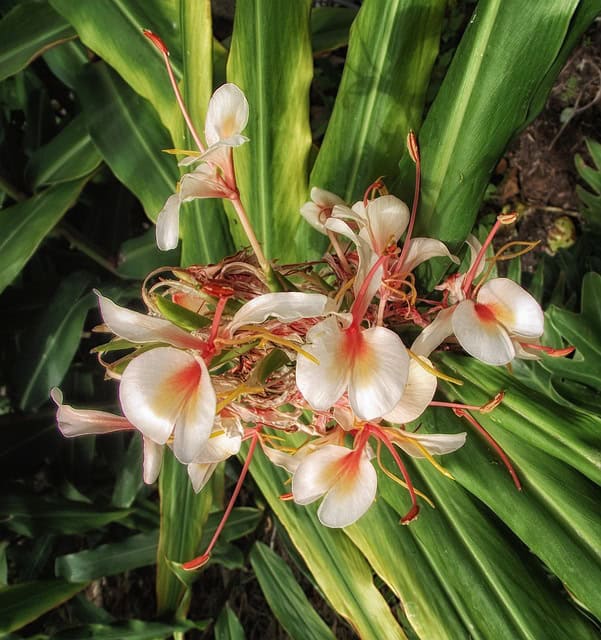
Ginger, known for its warmth and spice, offers an invigorating tea that is renowned for its multitude of health benefits. Ginger tea is often used to alleviate nausea, especially morning sickness or motion sickness, and has anti-inflammatory properties that can soothe muscle pain and promote digestion.
To prepare ginger tea, peel and thinly slice a piece of fresh ginger root and steep it in boiling water for 10 to 15 minutes. You can enjoy ginger tea as is, or enhance it with honey, lemon, or even a sprinkle of cayenne pepper for an added kick. The versatility of ginger extends to improving the flavor of a variety of herbal blends, such as pairing it with lemon balm or mint for a refreshing drink.
Catnip
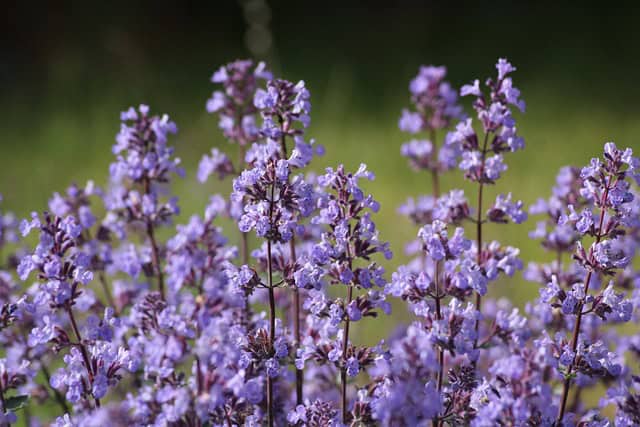
Catnip, usually associated with our feline friends, is a gentle herb that offers relaxing properties for humans as well. Drinking catnip tea can help reduce anxiety and promote sleep, making it an excellent night-time beverage. The flavor is mild and pleasant, reminiscent of mild mint with herbal notes.
To brew catnip tea, use about 1 to 2 teaspoons of dried leaves and steep them in hot water for 5 to 10 minutes. The tea can be served with honey or lemon to enhance its flavor. Since catnip is often considered safe and mild, it’s also a delightful addition for children, promoting calmness during stressful times.
Nasturtium
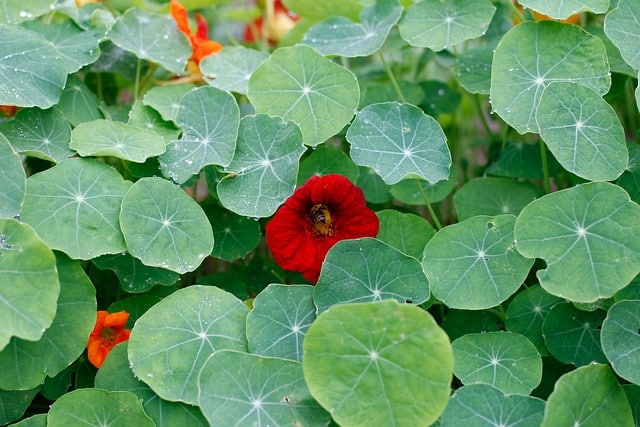
Nasturtium not only adds vibrant color to your garden but also boasts numerous health benefits when brewed into tea. Its leaves and flowers have a peppery flavor, similar to arugula, and are rich in vitamins, particularly vitamin C. Tea made from nasturtium can help support the immune system, offering antimicrobial properties.
To make nasturtium tea, steep 1 tablespoon of fresh leaves or a handful of flowers in boiling water for about 5 to 10 minutes. Some might enjoy this tea blended with other herbs like lemon balm for an extra zesty kick. Beyond tea, nasturtium is also a culinary delight, with its leaves and flowers commonly used in salads, the taste enhancing your dishes alongside its visual appeal.
Calendula
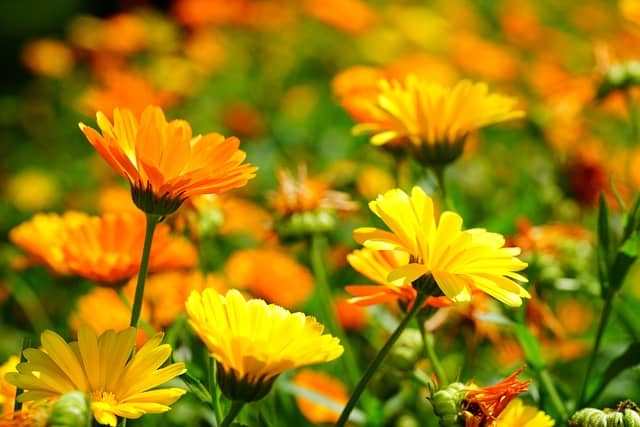
Calendula, also known as pot marigold, is both beautiful and beneficial. The petals can be used to brew a tea celebrated for its anti-inflammatory and healing properties. Calendula tea is often used to help alleviate digestive issues and as a soothing beverage for calming the mind. It has a gentle, slightly earthy flavor with a vibrant hue from the bright orange and yellow petals.
To brew calendula tea, use 1 to 2 tablespoons of dried petals steeped in hot water for 10 minutes. Its flavor can be enhanced with honey or lemon, creating a delightful cup that’s also visually stunning. Beyond the tea, calendula can be infused into oils and lotions, providing benefits for skincare, promoting healing and soothing irritated skin.
Cornflower
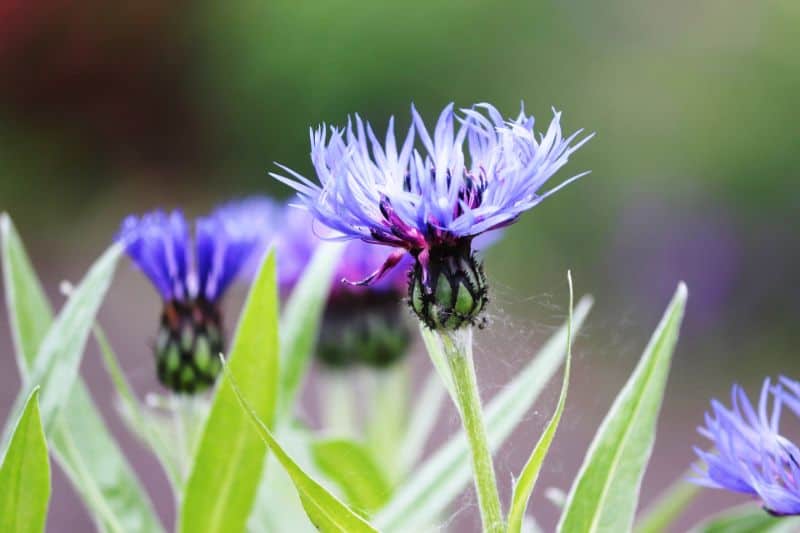
Cornflower, or bachelor’s button, is not just visually appealing with its striking blue flowers, but it also has notable benefits for tea drinkers. The petals can be brewed to create a sweet and lightly floral tea, which can act as a gentle toning agent and help improve digestion.
To prepare cornflower tea, steep about 1 tablespoon of dried petals in boiling water for 5 to 7 minutes. This tea can be enjoyed alone or blended with other herbs, such as chamomile or hibiscus, creating a delightful array of flavors and colors. In addition to its tea-making qualities, cornflower tea can be used as a natural dye or to liven up culinary dishes as a beautiful garnish.
Red Clover
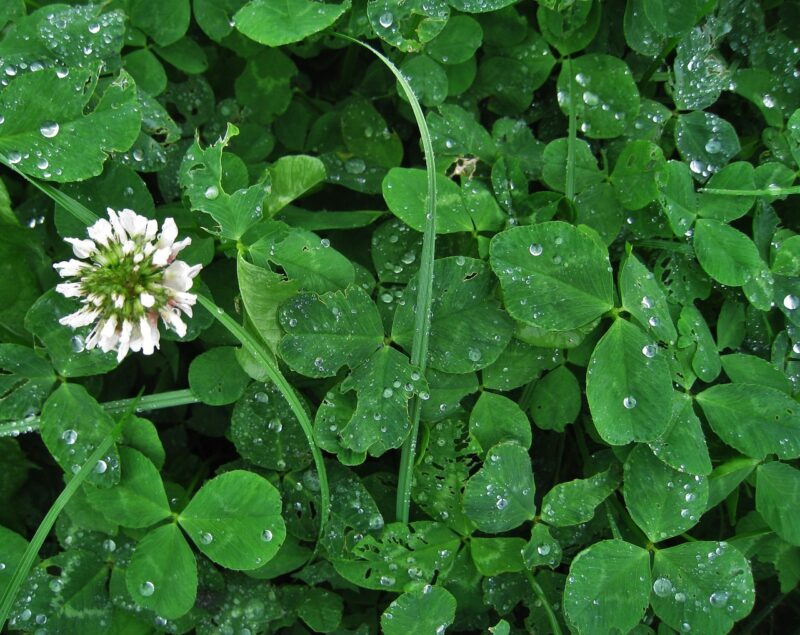
Red clover is highly valued in herbal medicine for its capacity to support hormonal balance and cardiovascular health. The tea made from its flowers provides a subtly sweet taste while delivering a variety of health benefits, including antioxidant properties.
To brew red clover tea, use 1 to 2 teaspoons of dried flowers steeped in hot water for approximately 10 minutes. The resulting tea may have a slightly sweet and herbaceous flavor that can be enjoyed on its own or blended with other herbs like chamomile or lemon balm for added benefits. Red clover can also be integrated into herbal infusions and tinctures to expand its use in your herbal remedy toolkit.
Why Plant an Herbal Tea Garden?
An herbal tea garden is a treasure trove for health and wellness enthusiasts. It’s not just about growing your ingredients; it’s about engaging with nature, enhancing your well-being, and embracing the joy of self-sufficiency. Each herb brings unique flavors and medicinal properties, allowing for an exploration of taste and health benefits through the various teas you create.
Having a dedicated space where you can grow these herbs makes tea drinking a more fulfilling activity. Knowing that each cup is made from freshly harvested leaves adds an element of enjoyment and connection to your beverage. You can create personalized blends based on your preferences or the health benefits you seek, tailoring your experience to meet your needs.
The Plants on This List Have Multiple Uses Beyond Tea
Many of the herbs featured in this guide extend their utility far beyond the cup. For instance, lavender can be utilized in aromatherapy, culinary dishes, or DIY beauty products. Aromatic herbs like thyme, rosemary, and basil not only find their home in the tea kettle but also in countless recipes, providing flavor and aroma to meals. Flowers such as calendula and nasturtium can transform both your beverages and your salads, adding color and nutrition to everyday meals.
By planting an herbal tea garden, you immerse yourself in a world rich with flavor and health, as well as cultivate the skills necessary to nourish your body naturally. Your tea garden becomes a sanctuary, offering a glimpse into the powerful relationships between plants and wellness, allowing you to take control of your health journey one cup at a time.
How To DryHerbs and Flowers forTea
Drying herbs and flowers allows you to preserve their flavor, aroma, and medicinal properties, ensuring a steady supply of flavorful tea throughout the year. Here’s a detailed process for drying your herbs effectively:
Harvest Timing: For optimal flavor and potency, harvest your herbs in the morning after the dew has evaporated and before the heat of the day reduces their essential oils. This timing helps capture the plant’s peak potency.
Preparation: Rinse your herbs or wipe them gently with a damp cloth to remove any dirt or insects. Be careful not to bruise the leaves. Remove any wilted or damaged leaves.
Drying Methods:
Air Drying: This traditional method involves bundling small groups of herbs together and hanging them upside down in a warm, dark, and dry space. Ensure good air circulation to prevent mold. A kitchen or pantry may work well.
Dehydrator: Using an electric dehydrator is efficient for quick drying. Set it to a low temperature (around 95°F or 35°C) to preserve the herbs’ essential oils. Monitor the herbs regularly to avoid over-drying.
Oven Drying: You can use your oven to dry herbs as well. Set it on the lowest heat setting (around 140°F or 60°C) and spread the herbs on a baking sheet. Keep the door ajar to allow moisture to escape. Check frequently to avoid browning or cooking the herbs.
Storage: Once the herbs are completely dry (they should crumble easily), store them in airtight containers, such as glass jars or resealable bags, away from direct sunlight and moisture. Label each container with the herb’s name and date of drying.
Using Dried Herbs: When it’s time to brew your tea, you can use 1 to 2 teaspoons of dried herbs per cup of water. Steep in boiling water for the recommended time, as mentioned in previous sections. Enjoy the fresh flavors and aromas in your herbal remedies.
Creating an herbal tea garden is a wonderful way to connect to nature, improve your overall well-being, and enjoy the exquisite variety of flavors and health benefits offered by herbs. As you sip your homegrown herbal teas, you’ll appreciate the labor of love and dedication that went into cultivating your garden, while also benefiting from the natural healing properties that these herbs provide. Whether it’s a soothing cup of chamomile at bedtime or an invigorating mint tea in the afternoon, the pleasures of your healing tea garden await you in each fragrant sip.


